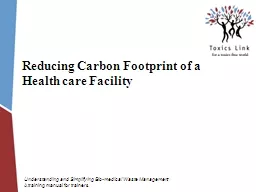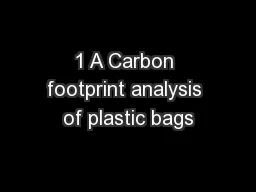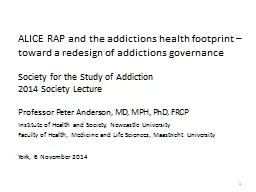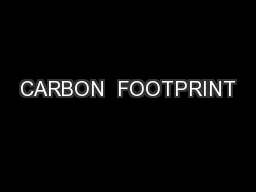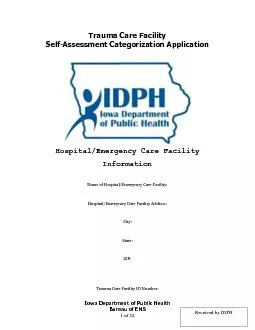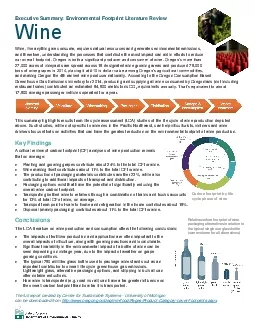PPT-Reducing Carbon Footprint of a Health care Facility
Author : debby-jeon | Published Date : 2018-01-21
Understanding and Simplifying Biomedical Waste Management A training manual for trainers Carbon footprint of a Health care Facility Mercury emissions of a 300500
Presentation Embed Code
Download Presentation
Download Presentation The PPT/PDF document "Reducing Carbon Footprint of a Health ca..." is the property of its rightful owner. Permission is granted to download and print the materials on this website for personal, non-commercial use only, and to display it on your personal computer provided you do not modify the materials and that you retain all copyright notices contained in the materials. By downloading content from our website, you accept the terms of this agreement.
Reducing Carbon Footprint of a Health care Facility: Transcript
Understanding and Simplifying Biomedical Waste Management A training manual for trainers Carbon footprint of a Health care Facility Mercury emissions of a 300500 bedded hospital 3kgsyear A 700 . TOOL OF WASTE. MANAGEMENT IN EUROPE. 01/04/2014. co2zw@. sostenipra.cat. pere.llorach@uab.cat. Xavier . Gabarrell. , Joan . Rieradevall. , Pere Llorach. Universitat Autònoma de Barcelona (UAB). Ramon Farreny, Carles M. Gaso. July 2011. A review of the Life Cycle Analysis on Carrier Bags – UK Environment Agency. 2. Background. In February 2011, The UK Environment Agency published a report, . Life Cycle Analysis on Carrier Bags.. – . toward . a redesign of addictions . governance. Society for the Study of Addiction. 2014 Society Lecture. . Professor Peter Anderson, MD, MPH, PhD, FRCP. Institute of Health and Society, Newcastle University. Kurt . Kratena. , . Mark Sommer. Fairtax. Conference: “Options for an EU Tax as an EU Own Resource” . 19. th. September . 2016, . Vienna, WIFO. Taxing. CO. 2. . footprint. . . Proposals for an own EU tax: non distorting taxes, sustainability criteria . THINK GREEN GO GREEN OR YOU’LL BE FACING RED!!!. what is carbon footprint ???. A carbon footprint is a measure of the impact our activities have on the environment, and in particular climate change. It relates to the amount of greenhouse gases produced in our day-to-day lives through burning fossil fuels for electricity, heating and transportation etc. . Credit: based on Maths lesson ideas from . David Brown, Nelson Mandela . Schule. , Berlin. The project ‘Global Fairness: Schools as Agents of Change’ has been funded with support from the European Commission. The contents of these actions are the sole responsibility of the contractor and can in no way be taken to reflect the views of the European Union. . Lab activity in preparation for practical exam. AS level biology. Food Tests. Food Tests. What is Benedict's Test for Reducing Sugars?. What are reducing sugars?. Reducing sugars. What is the procedure for the Benedict's Test for reducing sugars?. Presented to:. State of California, Department of General Services. EPP Task Force PCRC Paper Forum. Wednesday, June 24, 2009. By: Reid Miner. NCASI, Research Triangle Park, NC, USA. With significant contributions from. . Keys to Improving Patient Care. Reducing Patient Readmissions / . 2. Overview. Impact of the Patient Protection and Affordable Care Act (PPACA) on your facility . Critical strategies to reduce readmissions. Self - Assessment Categorization Application Iowa Dep artment of Public Health Bureau of EMS 1 of 52 Received by IDPH Hospital/Emergency Care Facility Information Name of Hospital/Emergency Care Fac Companies - Natural Capital Risk Exposure of Financial Sector in India organized by GIZ – Nov’15 Tata Cleantech Capital Ltd (TCCL) • Tata Clean t ech Capital is a j o int ve n t u re betw ExecutiveSummaryWineWine like anything we consume requires natural resources and generates environmental emissions and therefore understanding the processes that contribute the most impact can aid in IHSCM National Conference Presentation. Janet Smith. The Royal Wolverhampton NHS Trust Green Plan 2020-2025. Focus on. Targets-25% reduction in 2025; Net zero by 2040 and Net zero by 2045 on NHS Carbon Footprint plus . For level II and resident review. 2020. Presented by Anne Yeakley CARE Program Manager. KDADS CARE Program . To ask questions during the training make sure you go to the chat box and ask your questions and we will try to answer them we go.
Download Document
Here is the link to download the presentation.
"Reducing Carbon Footprint of a Health care Facility"The content belongs to its owner. You may download and print it for personal use, without modification, and keep all copyright notices. By downloading, you agree to these terms.
Related Documents

